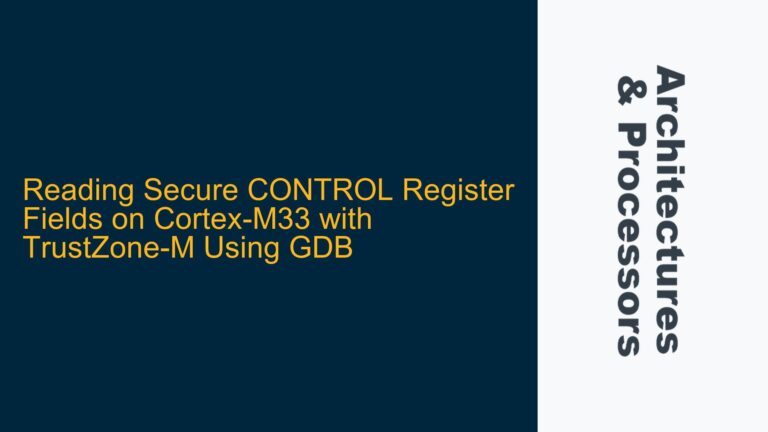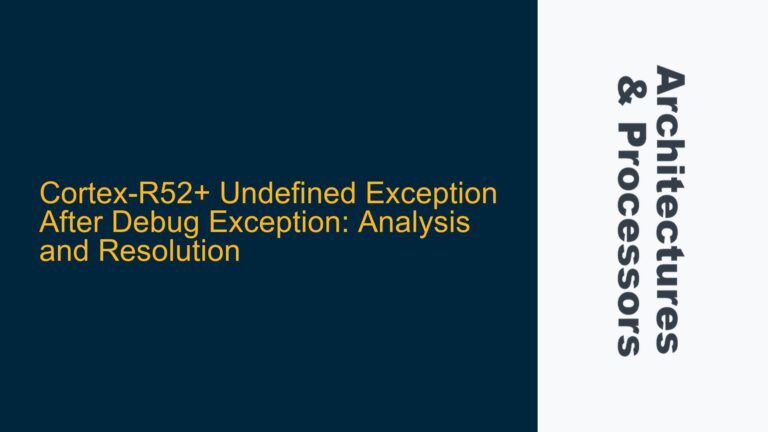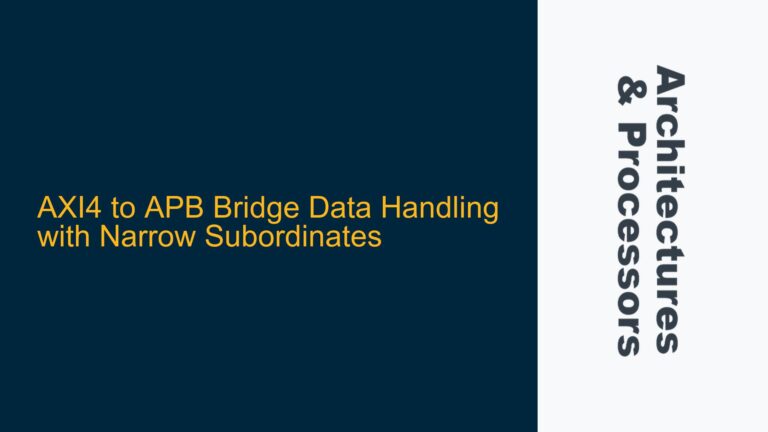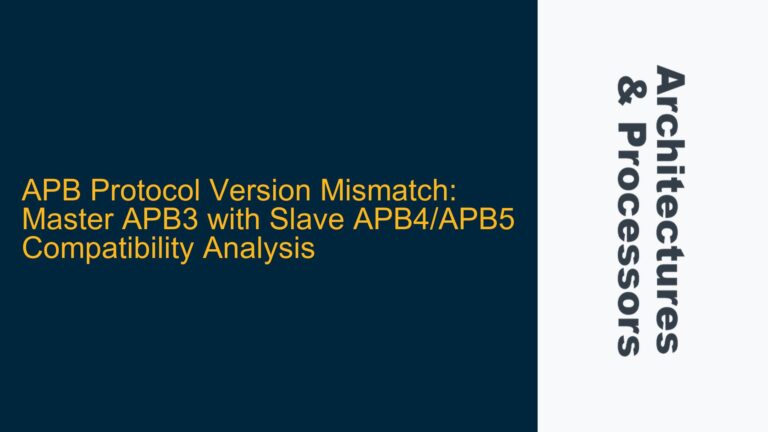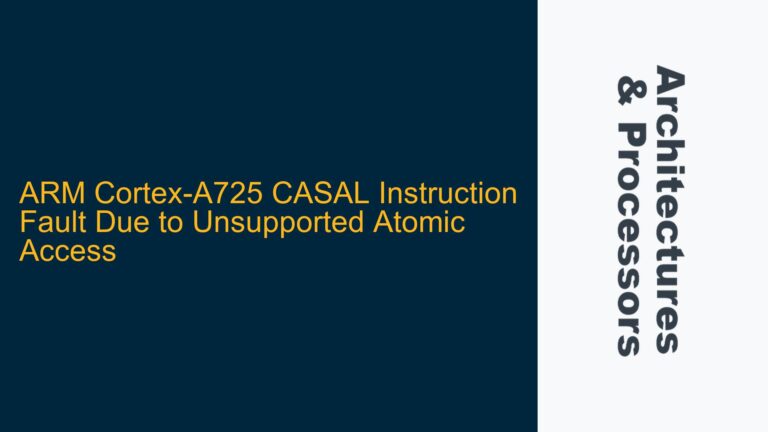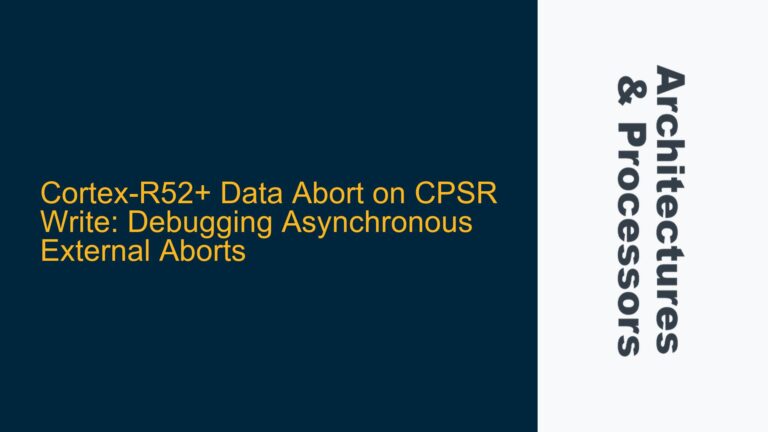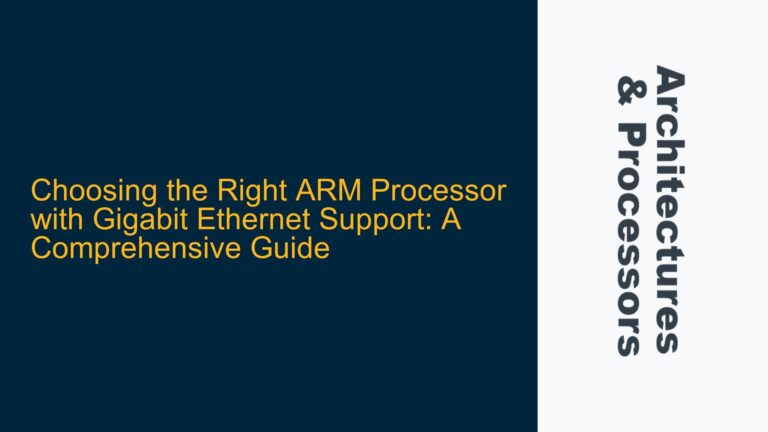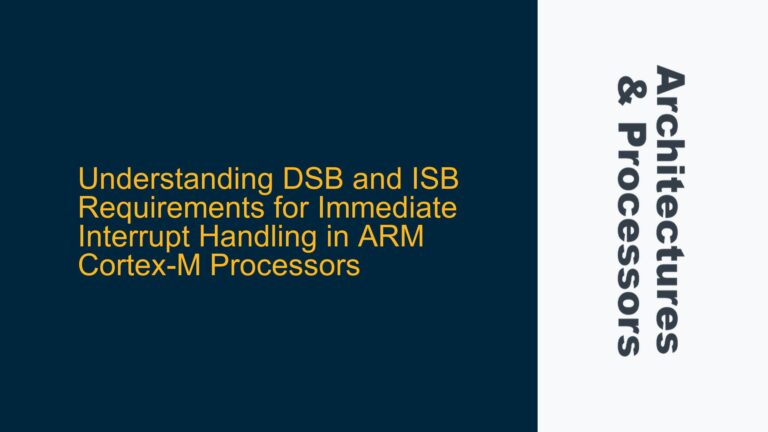Reading Secure CONTROL Register Fields on Cortex-M33 with TrustZone-M Using GDB
Understanding Secure and Non-Secure CONTROL Register Banked Fields in Cortex-M33 The ARM Cortex-M33 processor, which incorporates TrustZone-M technology, introduces a dual-world execution environment: Secure and Non-Secure. This separation is critical for implementing robust security architectures in embedded systems. The CONTROL register in the Cortex-M33 is one of the key registers that is banked between these…
